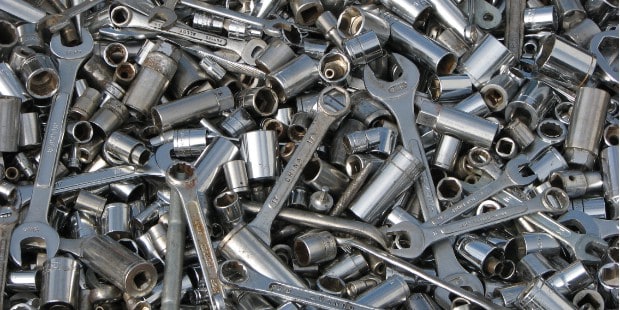 The wrench is curious and versatile tool.
The wrench is curious and versatile tool.
It can be used to loosen or tighten things, which is important for making adjustments. Whenever you think of cranking widgets – which is a common productivity term – the tool being used for said cranking is…a wrench. (You may have noticed that I’ve used quite a few images of wrenches to support my articles here at Vardy.me.)
What is it about the wrench that makes it so efficient and effective?
Did you know that those tools that IKEA includes with pretty much everything is a wrench? It’s the one thing you can expect when you buy a piece of furniture from them, and it’s the primary thing you need when assembling the furniture.
There are a lot of different types of wrenches, and some do certain jobs better than others. You can have a ton of wrenches in your toolbox, and know that one will do one job better than another – but in a pinch you’ll likely have another wrench than can do the trick as well.
That said, some wrenches simply won’t work in certain situations. That’s why it’s important to wave a wide variety of them at your disposal. Perhaps that’s why in the UK, wrenches are commonly referred to as spanners. They tend to span different use cases, but some span more than others.
When someone says that they had “a wrench thrown into things”1, it often means that the plans had to be adjusted as a result. Wrenches help with adjustments, and sometimes the wrench being thrown in takes you away from the wrong thing and closer to the right thing — rather than the other way around.
I may not be a very handy person, but I do know how to use a wrench. And I certainly have a ton of them in my toolbox…just in case. Do you?
Photo credit: Sara (CC BY-NC 2.0)
1 To be fair, the wrench often mentioned in this idiom is the monkey wrench.

